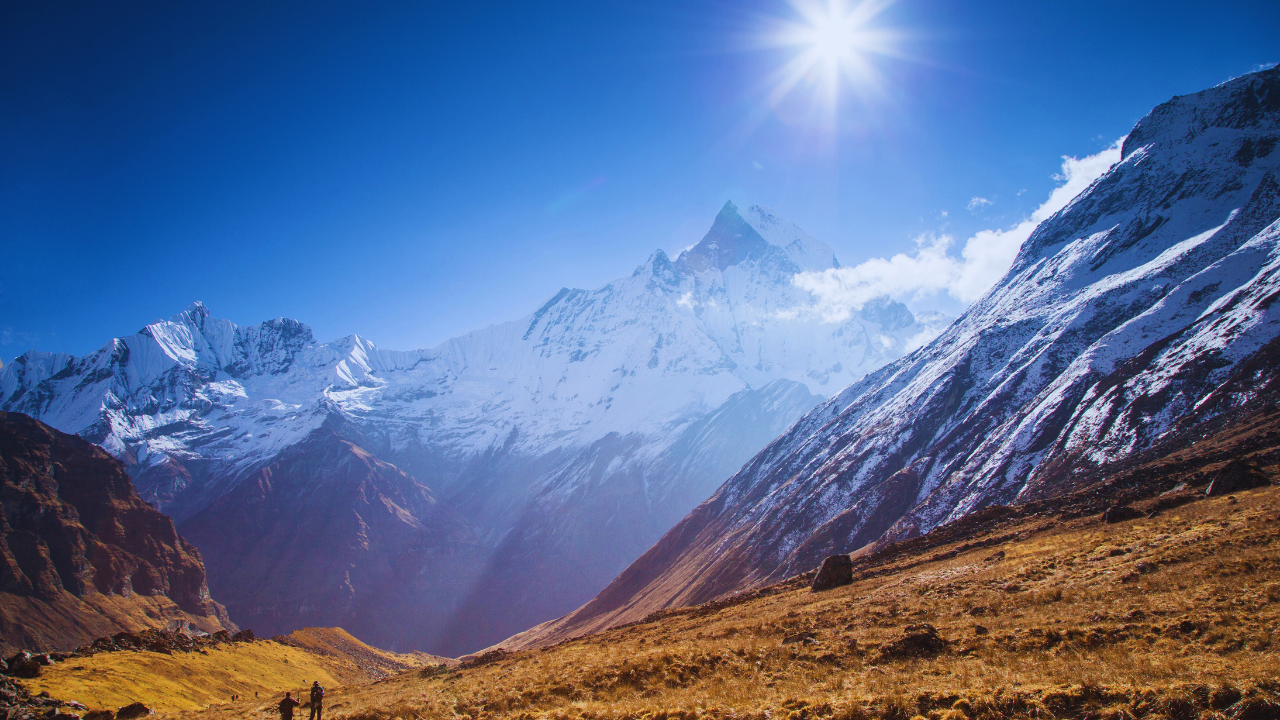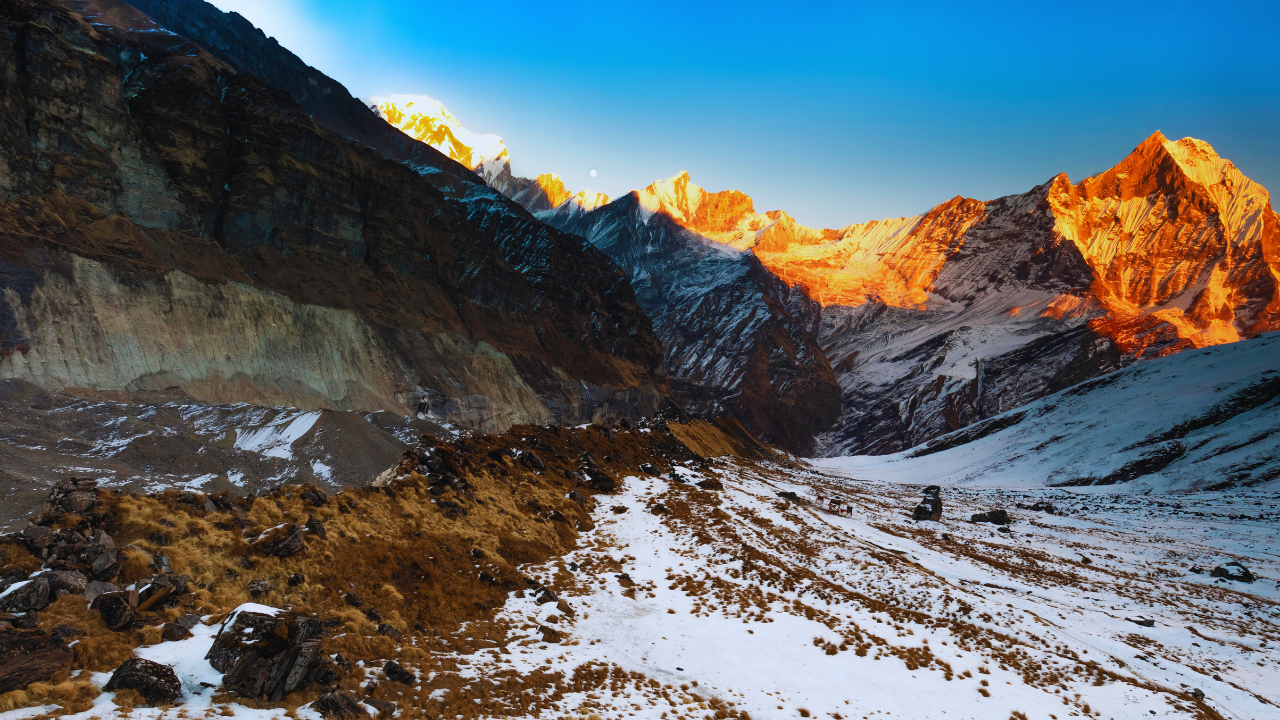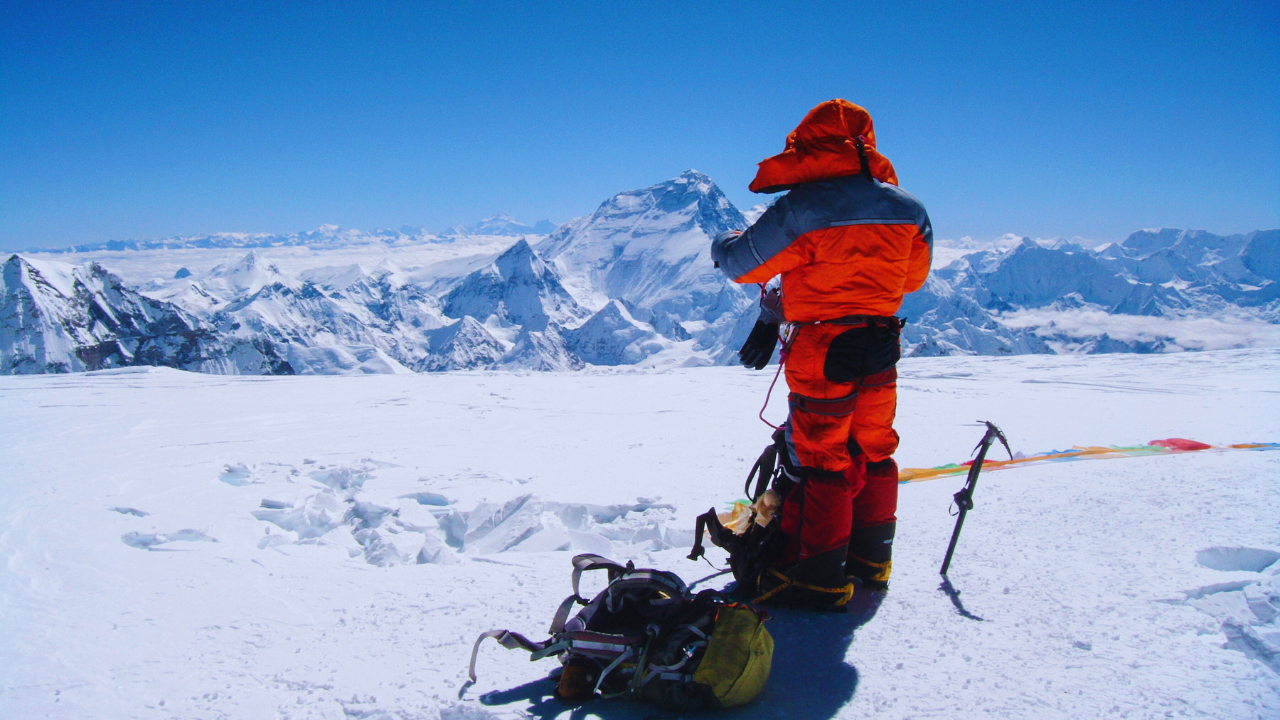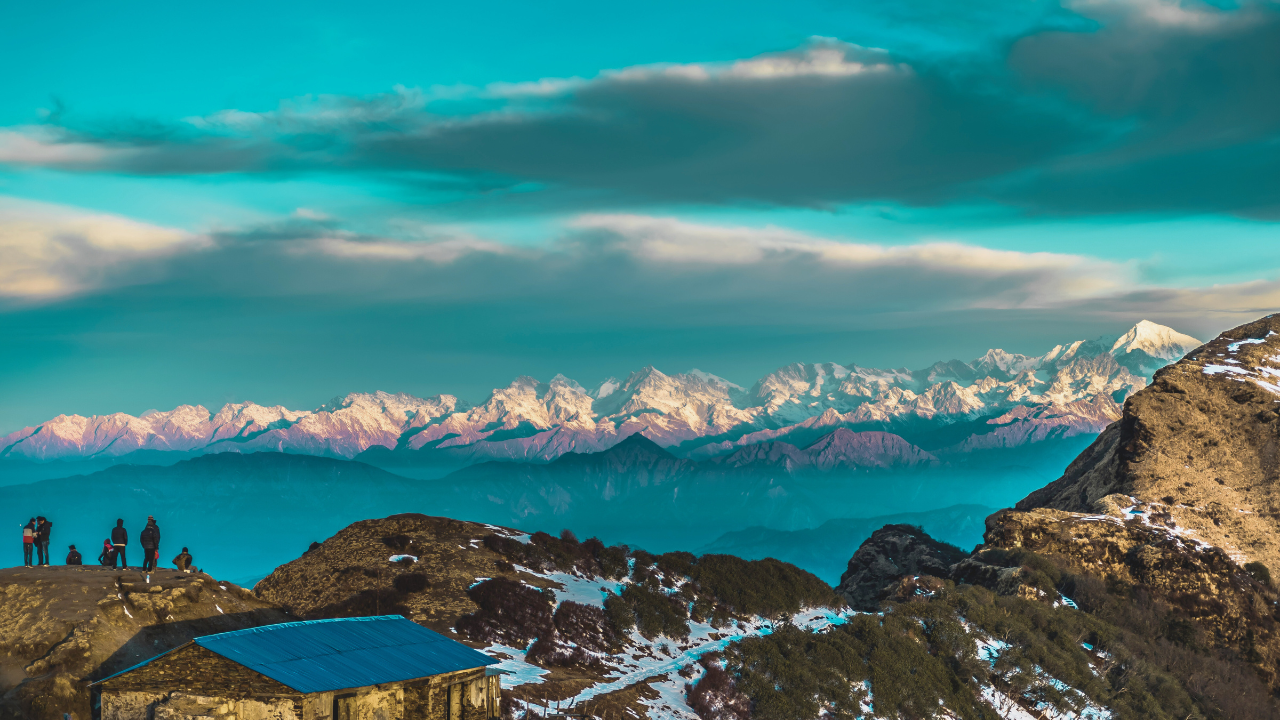Imagine a white landscape filled with rhododendron groves, frozen rivers, and peaceful villages set against a backdrop of high, snow-capped mountains. That's the ABC winter trek experience.
Many trekkers will undoubtedly make the similar decision to go in the busier, warmer spring and autumn months, but for the adventurous and intrepid, it is a pledged experience that will live on forever in their mind. The roads can be tough, however; on a winter trek the factors of seclusion, abundance of sunshine, and sanity of true adventure far outweigh it.
Taking your hike in December, January, and February during the off-season will mean that the same trails have a much lower number of people on the same trails. It will be a less visited and quieter trek where you will be surrounded by the raw natural beauty of the Himalayas. With lower numbers, you get to enjoy more solitude, a quieter teahouse environment, and more chance of getting accommodation at shorter advance booking. The weather is crisp and biting, and there are spectacular, unobstructed views of the mountain chain, Annapurna I, Machapuchhre, and Hiunchuli. The scenery after new snow makes the area a snowy wonderland, and there are opportunities for great photos. You'll be less troubled by leeches, which is a monsoon issue.
Winter during the trek to the ABC involves considerable falls in temperature, particularly at higher altitudes. Although the lower section can be warm and sunny during the day, higher up, cold does become a primary issue. Day temperatures higher up in December can be 0°C to 5°C, but tend to fall to a very cold -15°C or lower at night. In January and February, the temperature is colder, and the night temperatures at the ABC tend to fall to less than -20°C.
Fewer daylight hours mean planning the beginning of hikes accordingly so that one arrives at the destination before nightfall and while temperatures are still warm. Additionally, there is a history of regular heavy snow at this time of year. When heavy snow slides on trails, the footing is okay if it is fresh but as snow becomes packed and slippery, the danger increases to an eventual avalanche risk in extremely rare instances.
Packing to trek to ABC during winters calls for preparation and layering to be warm, dry, and safe. Your backpack should comprise:
Winter trekking, while as rewarding as other forms of trekking, brings its own safety issues. It is highly recommended that you go trekking accompanied by and experienced guide who understands the trails and the snow and weather patterns. You will also need guides to look for signs of frostbite and altitude sickness.
Always be on the lookout, drink during the day (even if you don’t feel thirsty), and refrain from overexertion. Acclimatization remains necessary, so climb up at a moderate pace. Keep in mind that a few of the higher-elevation teahouses remain closed during the winters, so a guide will offer you accommodation and lodging. It is necessary to embark on your day's trekking at an early time to prevent trekking during the dark, cold dawn and late afternoon dusk times, when slippery trails become especially hazardous.
Trek to Annapurna Base Camp in winters might not be for all, but if you are well-trained and capable of doing adventurous jobs, then the trip is one that you would always remember.















































Comments